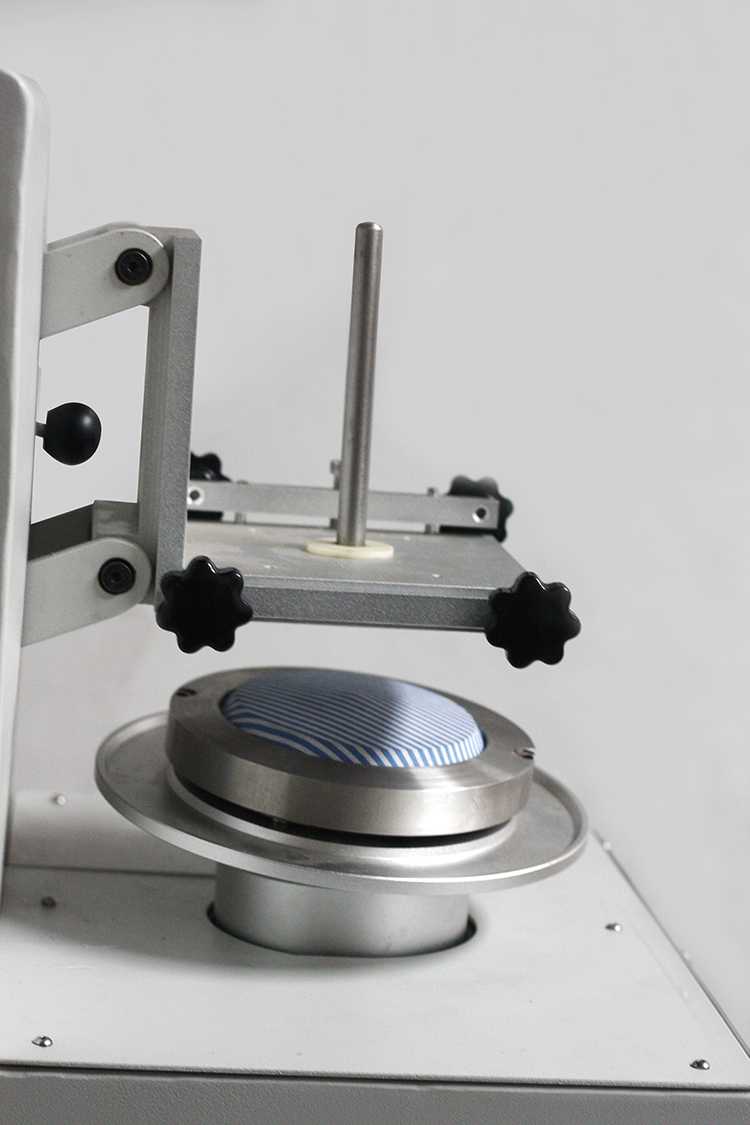Schober abrasion tester experimental operation

The Schober abrasion tester uses a rotational wear test method to test the wear resistance of automotive interior materials, especially interior leather coatings.
Shanghai Qianshi Precision Electromechanical Technology Co., Ltd. was established in 2012. It focuses on the research, development, design, and production of textile testing instruments, and provides textile testing instruments and services for academic research units and testing institutions. Shanghai Qianshi is one of the most competitive R&D textile testing instrument manufacturers in China. The R&D team is composed of a group of experienced engineers. We are committed to serving customers wholeheartedly and striving to promote technological innovation in textile testing instruments.
Applicable standards:
DIN 53863part2 "Abrasion test on textile surfaces (rotational wear test)", GME Standard60345, GMW Standard3283, VW/Audi PV3908
Test principle:
The circular specimen is installed on the rotating test head. The specimen is rubbed against the friction object (sandpaper) in clockwise and counterclockwise directions at a certain speed, pressure, and number of rotations by using a rotational wear method. The friction object maintains linear contact with the sample, so it can produce a friction effect in the tangent direction. Change the rotation direction every 100 frictions (settable), and evaluate the test results by mass loss and hole generation.


Technical Parameters:
- Number of revs: 75l/min;
Taperangle: 166°;
Declination of mounting head support: 7°;
Specimen size: 100 cm²;
Test area: 50 cm²;
Arc height measuring device, 0 - 10mm adjustable;
Loads on specimen: 0.5 - 25N adjustable;
Loading weight: 50g, 100g, 250g, 500g, 1000g, 1500g;
External dimension: 325 x 565 x 560 mm;
Weight: 35kg;
Power supply: 115/240V, 50/60Hz;
Power consumption: 130W.
Experimental operation:
1. Use the accessories configured by the instrument to install the sample that has been treated with temperature and humidity on the sample fixture to form a rotating test head;
2. Use the arch height test device to adjust the protruding height of the test head according to relevant standards or other requirements, generally 5 to 8 mm;
3. Install the test head with the sample on the test head mounting plate on the instrument workbench, and install and tighten the test head through the cooperation of the positioning pin on the mounting plate and the positioning hole under the test head;
4. Use the positioning Install the friction sandpaper on the lower surface of the pressure plate with the friction fixture on the pressure plate of the instrument, and lock the fixture to ensure that the sandpaper is clamped and installed flat;
5. Manually pull outward the pressure plate lifting lock on the right side of the pressure plate, lower the pressure plate, and make the sandpaper contact with the surface of the sample on the test head;
6. Install the corresponding weight on the weight shaft above the pressure plate (equipped with one standard weight of 1500, 1000, 500, 250, 100, and 50g each) to apply a certain pressure to the sample friction. Select the pressure value to be applied according to the weight of the sample per unit area.
2024-12-31 11:54

